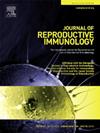Association between red cell distribution width and erectile dysfunction: A cross-sectional study using NHANES 2001–2004 data
IF 2.9
3区 医学
Q3 IMMUNOLOGY
引用次数: 0
Abstract
Red cell distribution width (RDW), a widely used and non-invasive biomarker of systemic inflammation, has been linked to various inflammatory conditions, including erectile dysfunction (ED). This study investigates the relationship between RDW and other inflammation-associated biomarkers with ED, using data from the National Health and Nutrition Examination Survey (NHANES) collected between 2001 and 2004. The analysis included 3988 participants, with 29.46 % classified as having ED. Biomarkers such as RDW, monocyte-to-lymphocyte ratio (MLR), neutrophil-to-lymphocyte ratio (NLR), systemic inflammatory response index (SIRI), systemic immune-inflammation index (SII), platelet-to-lymphocyte ratio (PLR), aggregate index of systemic inflammation (AISI), and C-reactive protein (CRP) were evaluated. Methods included multivariable logistic regression, subgroup analysis, generalized additive models (GAM), and smoothed curve fitting to explore associations. Receiver operating characteristic (ROC) curve analysis was used to assess diagnostic capabilities. Results showed significant positive associations between ED and RDW, MLR, NLR, and SIRI, with nonlinear relationships identified. RDW demonstrated the highest diagnostic accuracy for distinguishing ED (AUC = 0.66, 95 % CI: 0.65–0.68), outperforming other biomarkers. The study concludes that RDW is independently associated with ED, offering cost-effectiveness, non-invasiveness, and high diagnostic accuracy, making it a promising biomarker for ED assessment strategies.
红细胞分布宽度与勃起功能障碍之间的关系:一项使用NHANES 2001-2004数据的横断面研究
红细胞分布宽度(RDW)是一种广泛使用的非侵入性全身性炎症生物标志物,与包括勃起功能障碍(ED)在内的多种炎症有关。这项研究调查了RDW和其他炎症相关的生物标志物与ED之间的关系,使用了2001年至2004年收集的国家健康和营养检查调查(NHANES)的数据。该分析包括3988名参与者,其中29.46% %被归类为ED。生物标志物如RDW、单核细胞与淋巴细胞比率(MLR)、中性粒细胞与淋巴细胞比率(NLR)、全身炎症反应指数(SIRI)、全身免疫炎症指数(SII)、血小板与淋巴细胞比率(PLR)、全身炎症聚集指数(AISI)和c反应蛋白(CRP)被评估。方法包括多变量logistic回归、亚组分析、广义加性模型(GAM)和平滑曲线拟合来探讨相关性。采用受试者工作特征(ROC)曲线分析评估诊断能力。结果显示,ED与RDW、MLR、NLR和SIRI呈显著正相关,且存在非线性关系。RDW在区分ED方面表现出最高的诊断准确性(AUC = 0.66, 95 % CI: 0.65-0.68),优于其他生物标志物。该研究得出结论,RDW与ED独立相关,具有成本效益,无创性和高诊断准确性,使其成为ED评估策略的有希望的生物标志物。
本文章由计算机程序翻译,如有差异,请以英文原文为准。
求助全文
约1分钟内获得全文
求助全文
来源期刊
CiteScore
6.30
自引率
5.90%
发文量
162
审稿时长
10.6 weeks
期刊介绍:
Affiliated with the European Society of Reproductive Immunology and with the International Society for Immunology of Reproduction
The aim of the Journal of Reproductive Immunology is to provide the critical forum for the dissemination of results from high quality research in all aspects of experimental, animal and clinical reproductive immunobiology.
This encompasses normal and pathological processes of:
* Male and Female Reproductive Tracts
* Gametogenesis and Embryogenesis
* Implantation and Placental Development
* Gestation and Parturition
* Mammary Gland and Lactation.

 求助内容:
求助内容: 应助结果提醒方式:
应助结果提醒方式:


